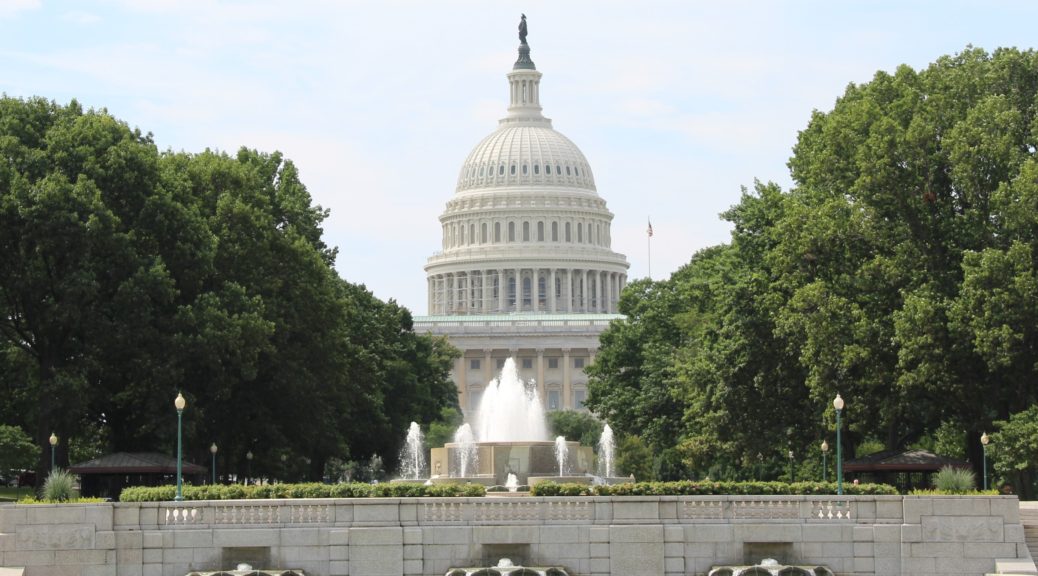
United States Capitol
This blog will feature the United States Capitol, the building where the House of Representatives and the Senate do their work. Both are part of the legislative branch of the government, responsible for enacting legislation. We arranged for a tour of the Capitol building through our Congressman.
In 1792, a competition was held for the design of the U.S. Capitol, however none of the submitted plans were selected. Dr. William Thornton asked to present plans even though the competition was closed. His plan was adopted with President George Washington laying the cornerstone for the capitol building in 1793. Since that time, the Capitol suffered fire damage during the War of 1812, has been rebuilt, restored and expanded. Nonetheless, the original plan has a similar concept to what we see today:
Thornton’s plan depicted a building composed of three sections. The central section, which was topped by a low dome, was to be flanked on the north and south by two rectangular wings (one for the Senate and one for the House of Representatives). President Washington commended the plan for its “grandeur, simplicity and convenience,” and on April 5, 1793, it was accepted by the commissioners; Washington gave his formal approval on July 25.
Credit: Architect of the Capitol (aoc.gov)
These are pictures of the exterior of the Capitol. The first two pictures below include the Capitol Reflecting Pool. The last picture was taken as the sun was starting to set – you can see that it has a dramatic effect on the apparent color of the building.
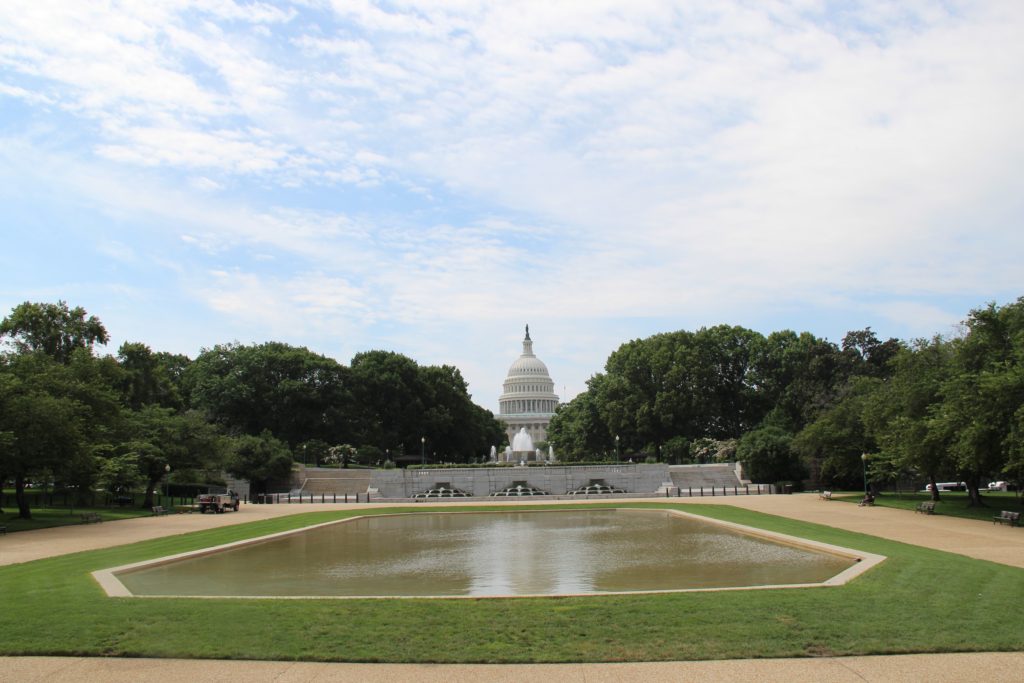
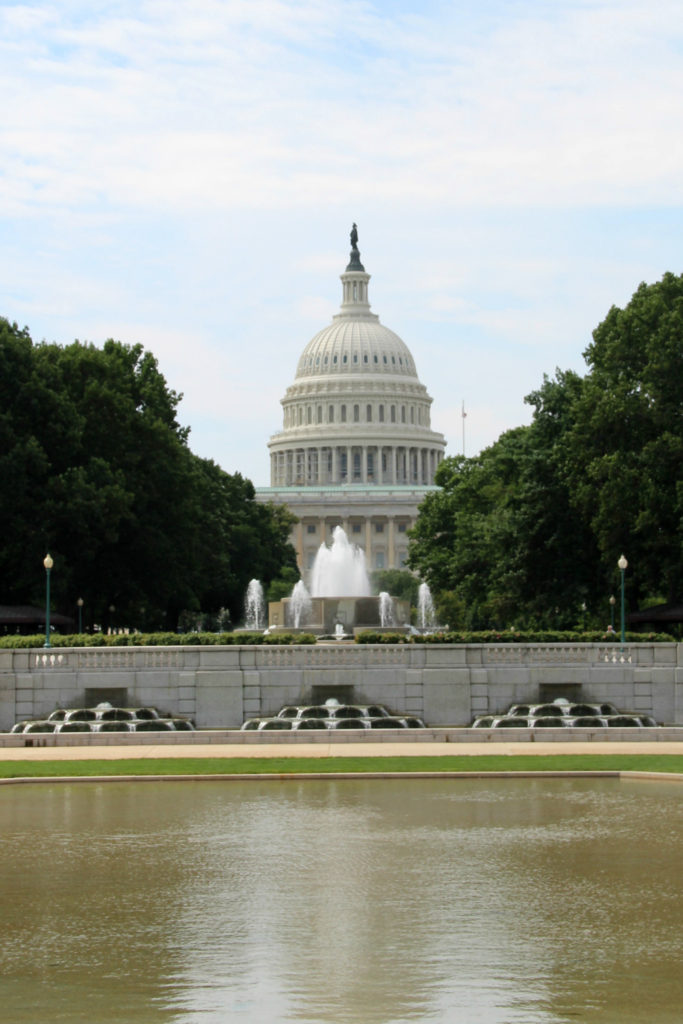
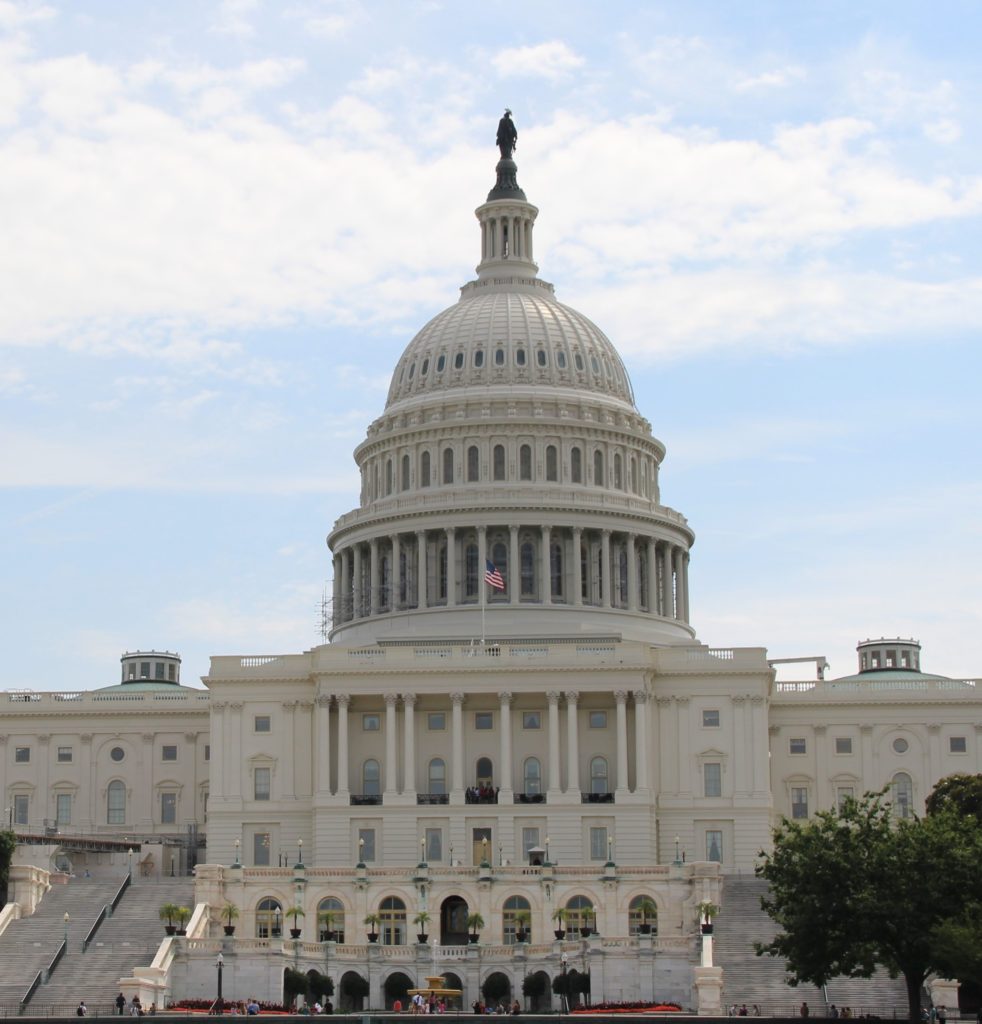
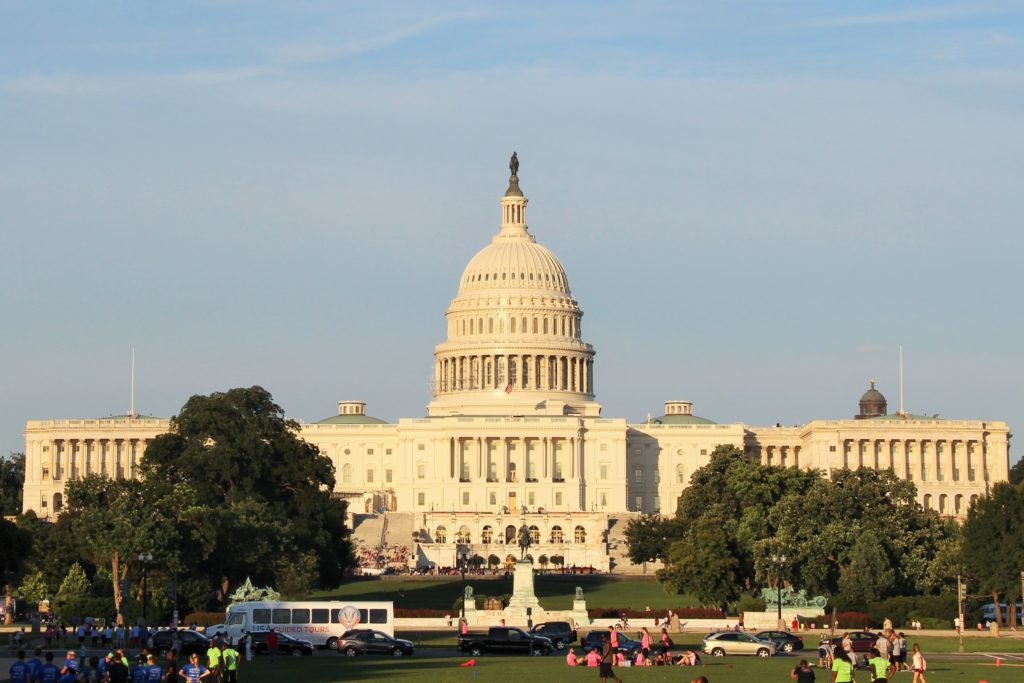
As the Capitol was expanded outward, it was determined that a larger dome was needed. The new dome was authorized by Congress in 1855, with much of the work being completed during the Civil War, which President Lincoln took as a sign the United States would survive as a united nation.
The U.S. Capitol’s dome is made of nearly 9,000,000 pounds of ironwork and cost over $1,000,000. It is 217 feet from the base of the dome to the top of the statue at the dome’s very top. The statue is bronze and is named “Statue of Freedom. ” It is just over 19 feet tall and weighs approximately 15,000 pounds. It sits on a pedestal with the words “E Pluribus Unum,” which is Latin for “Out of Many, One.” Immediately below the pedestal is an area surrounded by small columns. This is called the tholos and is lit when Congress is in session at night. These are pictures of the exterior of the dome – the third picture was taken from the Visitors’ Center.
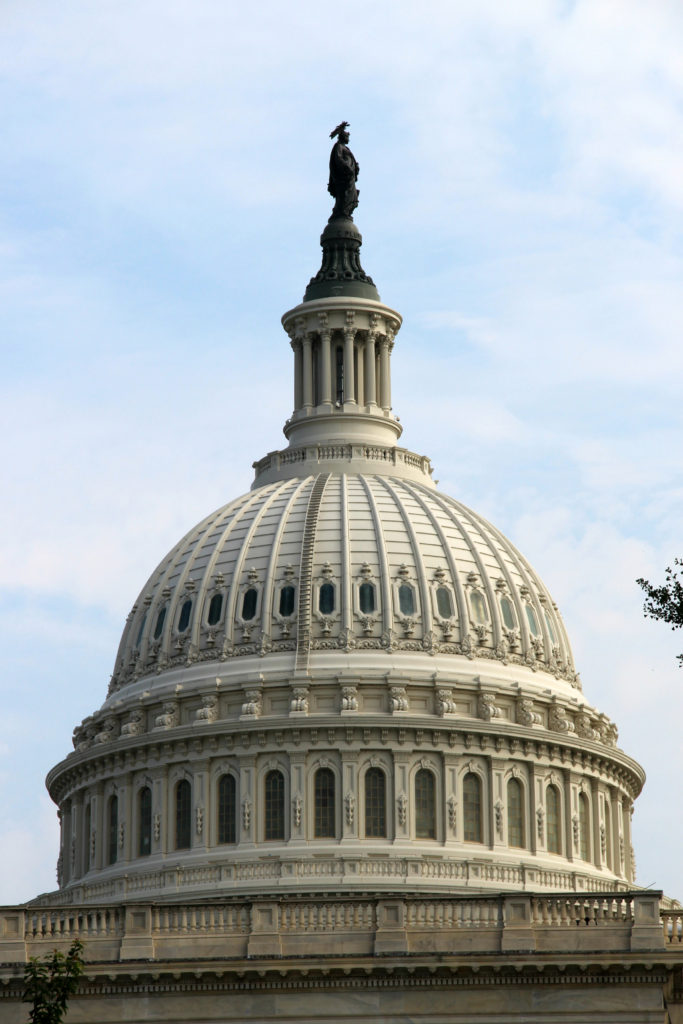
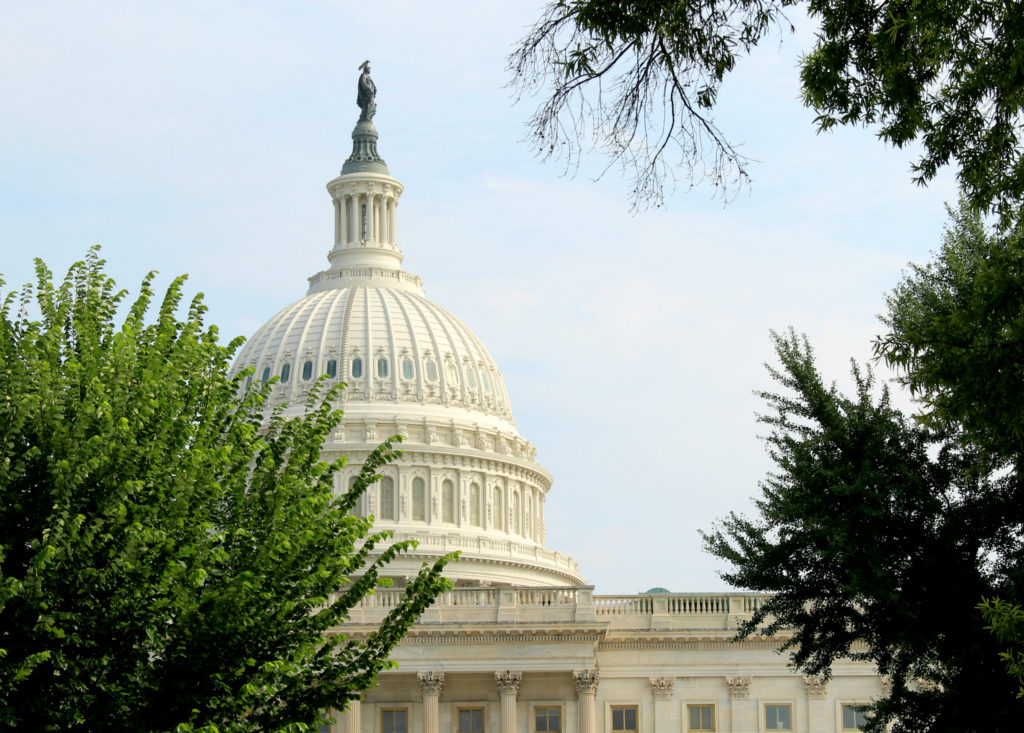

The Rotunda sits under the dome. The first three pictures are of the dome from inside. The first picture shows the Rotunda frieze which depicts American History from the discovery of America by Columbus to the birth of aviation. There are 19 panels. The one in the second picture shows Columbus landing in America. While they look like bas reliefs, they are actually frescoes.
The third picture is entitled the Apotheosis of Washington. Part of the dome was covered because of work being done, but this fresco was still visible. Apotheosis means becoming a god or the “glorification of a person as an ideal.” I placed an arrow to point out the figure of George Washington, the individual being “glorified.” On either side of him are figures representing the goddess Victoria (to his left) and the goddess of Liberty (to his right). The other 13 figures represent the first thirteen states.
There are also paintings in the Rotunda an example of which is pictured below. It is entitled “The Surrender of Cornwallis” and depicts the surrender of British troops in Yorktown, Virginia in 1781. It was painted in 1820 by John Trumbull. In addition, I have included part of the plaque honoring the crew and passengers of Flight 93 that crashed on September 11, 2001. The names of those on board were listed under the tribute I photographed. The terrorists aboard may have intended to crash the plane into the U.S. Capitol building.

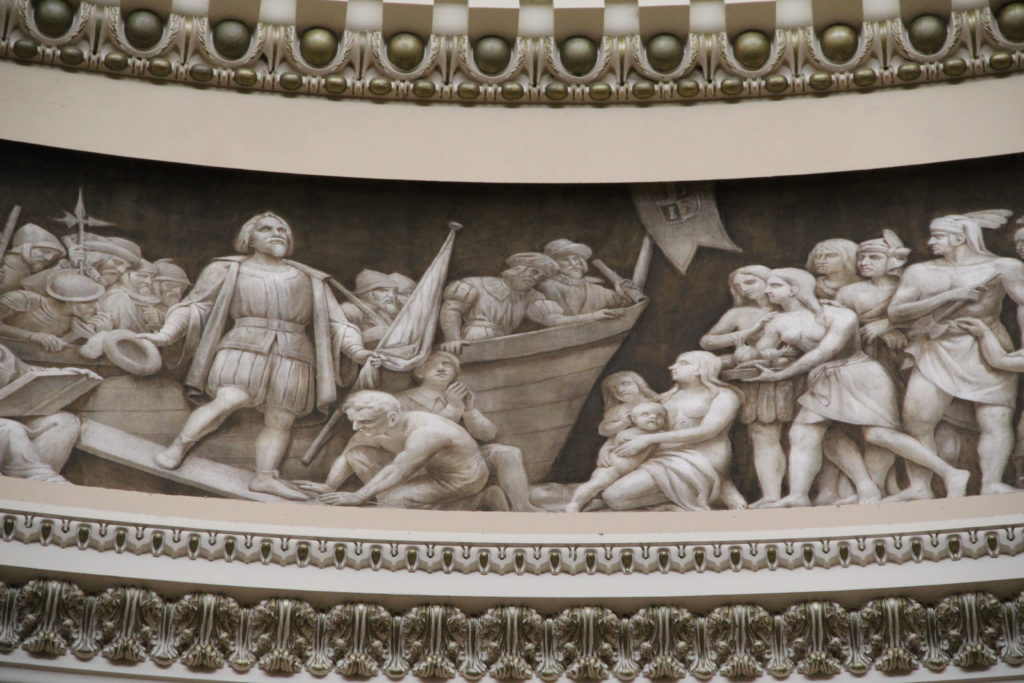

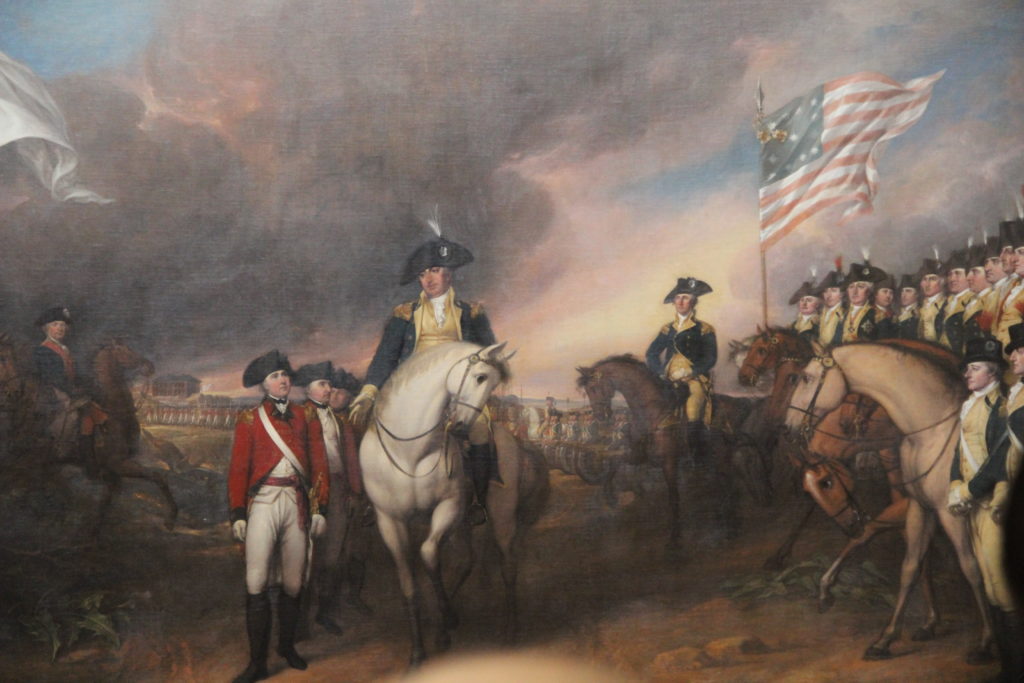

The next pictures are of the old House Chamber which is now called National Statuary Hall. The House of Representatives met here from 1807 to 1857 when they moved to their present location. Each state has a sculpture in honor of a hero or innovator from their state. You can see these sculptures in the background of the first picture below. Because of space issues, in addition to the sculptures here, some are located in the Crypt and some in the Visitors’ Center.
The second picture is the “Car of History Clock,” and is one of the oldest pieces in the U.S. Capitol, sculpted in 1819. Clio, the muse of history, holds a book and records history as it occurs. She is standing on a chariot, or car, which symbolizes the passage of time. One of the wheels of the chariot is the clock which still works. The chariot sits on a marble globe.
The last picture is a tile on the floor of the Statuary Hall that shows where President Lincoln’s desk was located when this was the House Chamber. He represented Illinois as a congressman from 1847 to 1849. When serving as a representative, he was a member of the Whig Party.


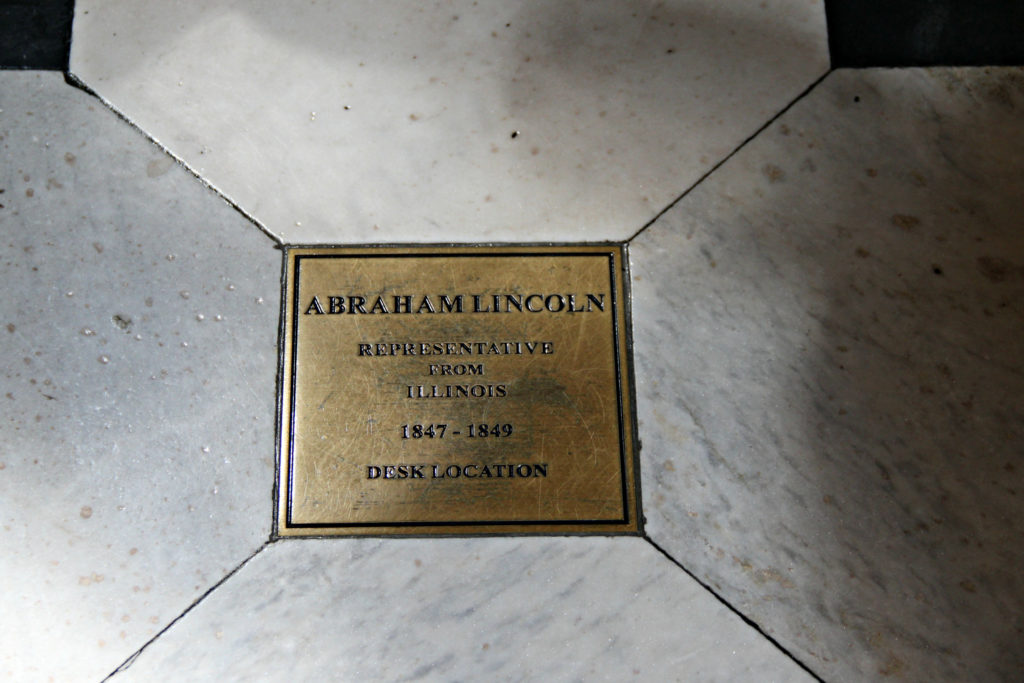
The next pictures are of the Old Senate Chamber where the Senate met from 1819 to 1859. The Architect of the Capitol website (aoc.gov) notes the important work of the time: “During this period, the Senate was embroiled in the great national debates of the 19th century, with slavery the dominant issue. The Missouri Compromise of 1820 was hammered out here.”
The Old Senate Chamber served as the home of the Supreme Court from 1860 to 1935. They moved their work here from the Old Supreme Court Chamber, also located within the U.S. Capitol, until they moved across the street to the present Supreme Court building. Today the Old Senate Chamber serves as a museum. The rounded table was the desk of the Vice President who serves as the President of the Senate. There are two visitors’ galleries overlooking the Old Senate Chamber.
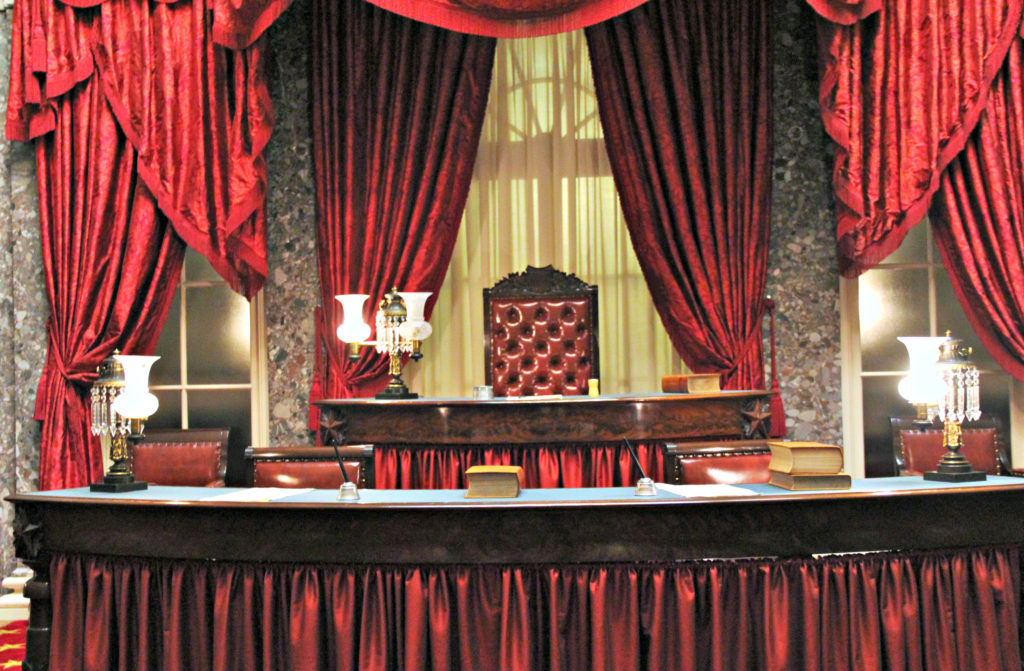

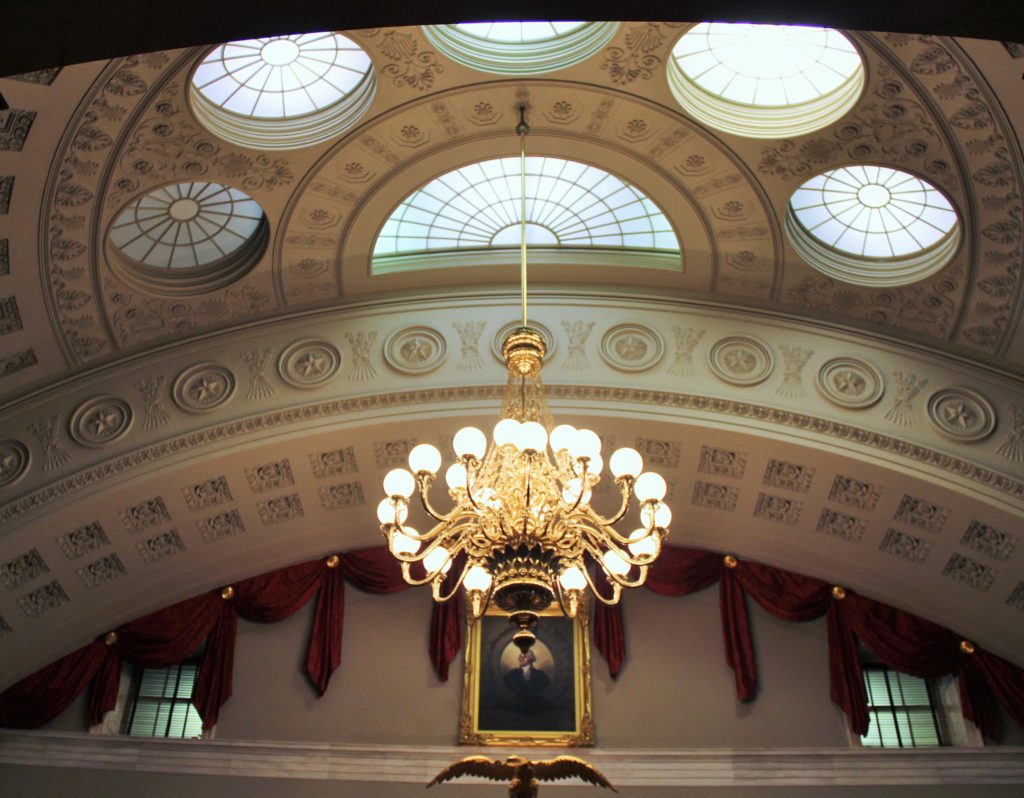
The first picture below is the crypt. It was intended that George Washington be buried here, but he wanted to be buried on the grounds of his estate in Mount Vernon – and his wishes were honored. No one is buried at the U.S. Capitol.
The last two pictures are of the Amateis Doors. They were originally intended to be part of a new entrance on the west side of the Capitol. This never happened and so they are displayed on the House of Representative side of the Capitol. In addition to the transom, there are eight panels depicting the subjects of jurisprudence, fine arts, science, mining, agriculture, iron and electricity, engineering and navel architecture and commerce. A close-up of the science panel is in the third picture. It depicts scientists engaged in conversation.
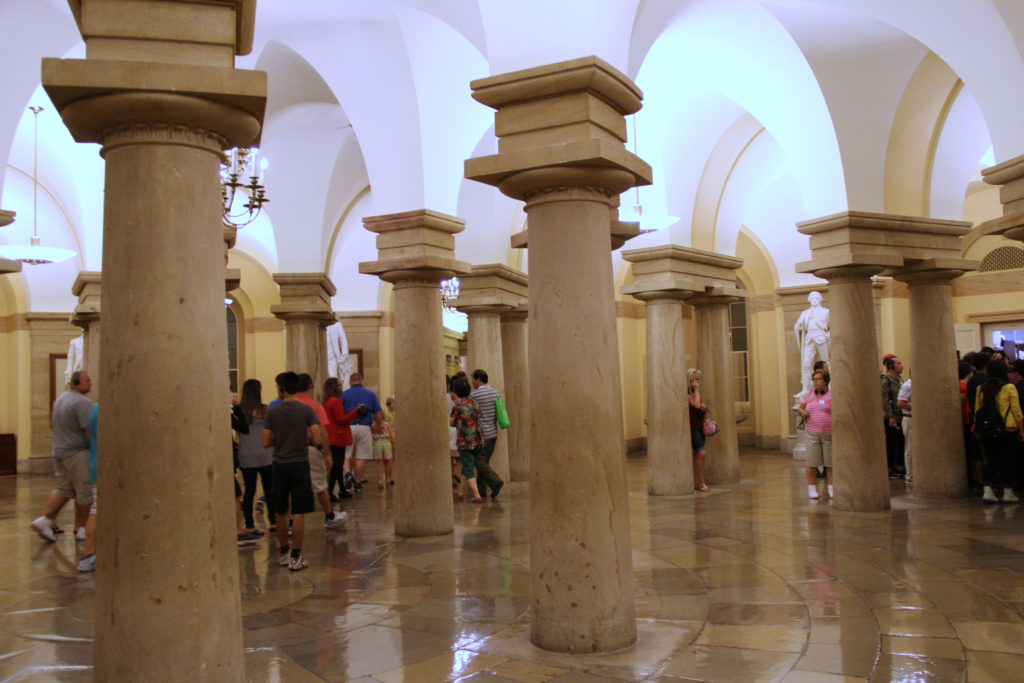



If you visit the U.S. Capitol, I would recommend arranging a tour. Ours was given by an intern from our congressman’s office. The tour certainly gave us insight into what we were seeing that we would not have been able to appreciate on our own.